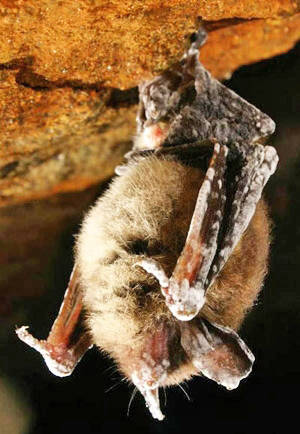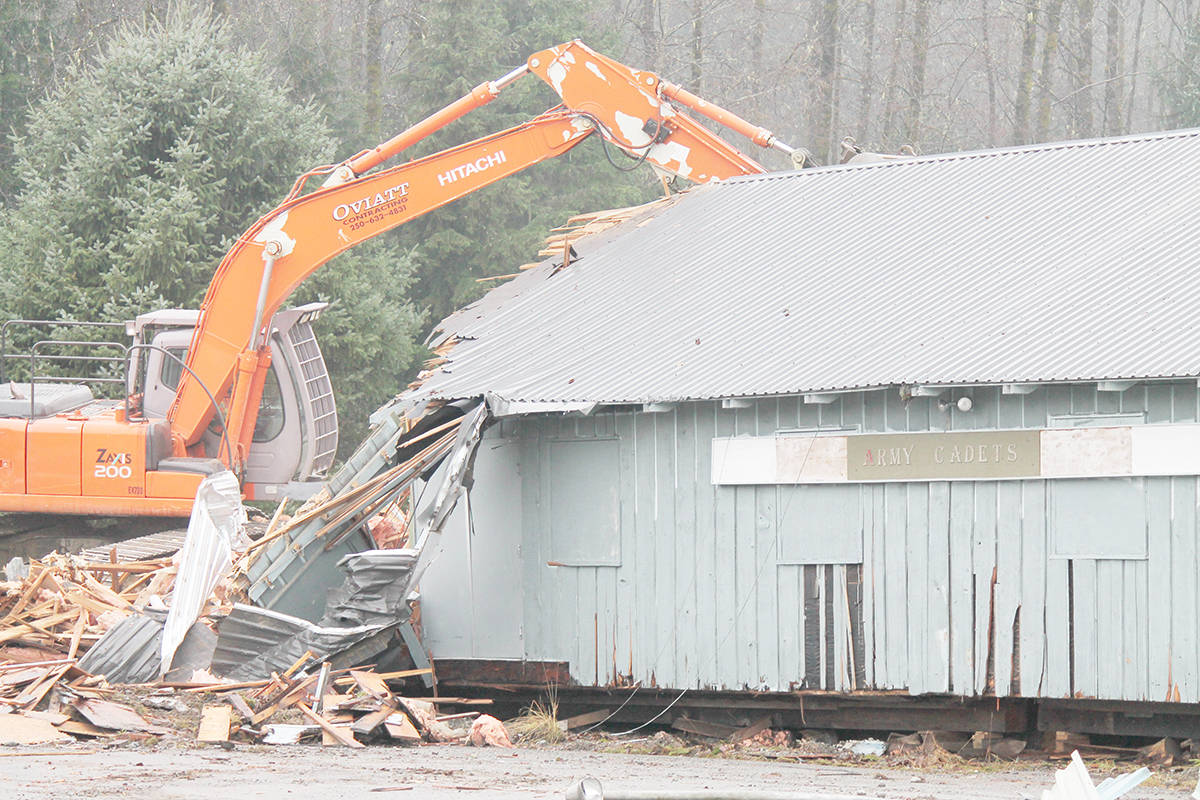Local conservationist group Kitimat Valley Naturalists is concerned that a fungal disease that has made its way up the west coast may affect an already depleted local bat population.
“Bat activity in our valley and near the former sea cadet hall was very low with few bats spotted over summer last year,” said KVN’s Walter Thorne.
The local bat population, estimated in 2016 at 1,500, was already disturbed following the demolition of the cadet hall in October 2016.
The hall, which hadn’t been used for over two years, was condemned by the District of Kitimat. Plans to demolish the building were halted when it was discovered that the colony of Little Brown Myotis bats had established itself inside.
All species of bats are federally and provincially protected under wildlife legislation. Little Brown Myotis’ have a wingspan of about 22-27 cm and live an average of between six and seven years.
The DoK waited until the last of the bats had left and migrated for the winter before demolishing the building.
Four wooden ‘bat condos’ were built and installed in the spring of 2017 in the vicinity of the building in hopes that the bats would return and use them to breed.
“So far our bat condos have had few visitors. We will, however, remain vigilant in watching out for any bat sightings and would advise others to do the same,” said Thorne.
He said, however, that KVN had not received reports of dead bats as a result of White Nose Syndrome (WNS).
WNS is a fungal disease responsible for the death of millions of bats in eastern North America and was recently confirmed in Washington State just 150 km south of the B.C.-U.S. border.
Revelstoke-based Community Bat Program’s Mandy Kellner said the presence of the fungus is very worrisome for the health of B.C.’s bat populations.
“The disease has near 100 per cent mortality for some species of bats exposed to the fungus, including the Little Brown Myotis. Although devastating for bats WNS does not affect humans,” said Kellner.
Funded by the Habitat Conservation Trust Foundation, the Forest Enhancement Society of BC, the Province of B.C., and the Habitat Stewardship Program, the BC Community Bat Program works with government and others on public outreach activities, public reports of roosting bats in buildings and the citizen-science bat monitoring program.
“We believe that our bats hibernate in relatively small groups across the province. Detecting WNS in our province will require many eyes on the ground,” said Kellner.
The typical first sign of the disease is bats flying during the winter, an unusual sighting at a time of year when bats should be hibernating. Another sign of the presence of WNS is the appearance of dead bats outdoors as they succumb to the effects of WNS.
“We encourage the public to report dead bats or any sightings of winter bat activity to the Community Bat Project (CBP).
“Bat carcasses will be submitted for testing for White Nose Syndrome and would provide the earliest indication of the presence of the disease in B.C.,” said Kellner.
Reports of winter bat activity will help focus research, monitoring and protection efforts.
She said there are currently no treatments for White Nose Syndrome.
“However, mitigating other threats to bat populations, and preserving and restoring bat habitat, may provide bat populations with the resilience to rebound,” said Kellner.
A few tips:
* if you find a dead bat, report it to the CBP as soon as possible for further information
* never touch a dead bat with your bare hands
* if you or your pet has been in direct contact with the bat you will need further information regarding the risk of rabies to you and your pet
To contact the BC Community Bat Program, visit www.bcbats.ca or email info@bcbats.ca. The Skeena Bat Program is run by Ashleigh Ballevona who can be reached at skeena@bcbats.ca or 1-855-922-2287 ext. 19.


